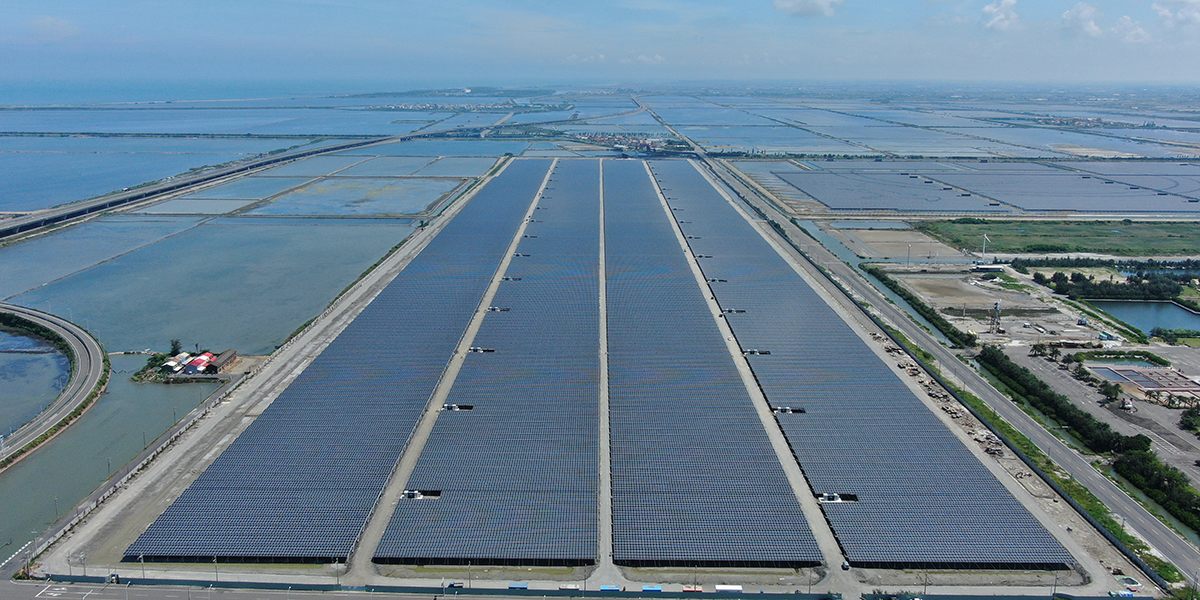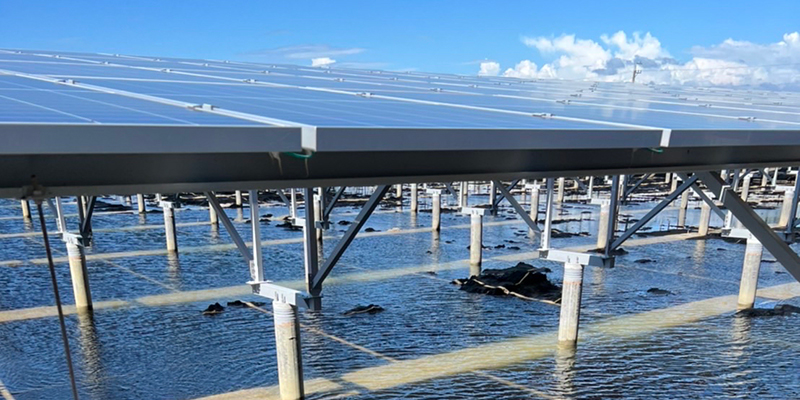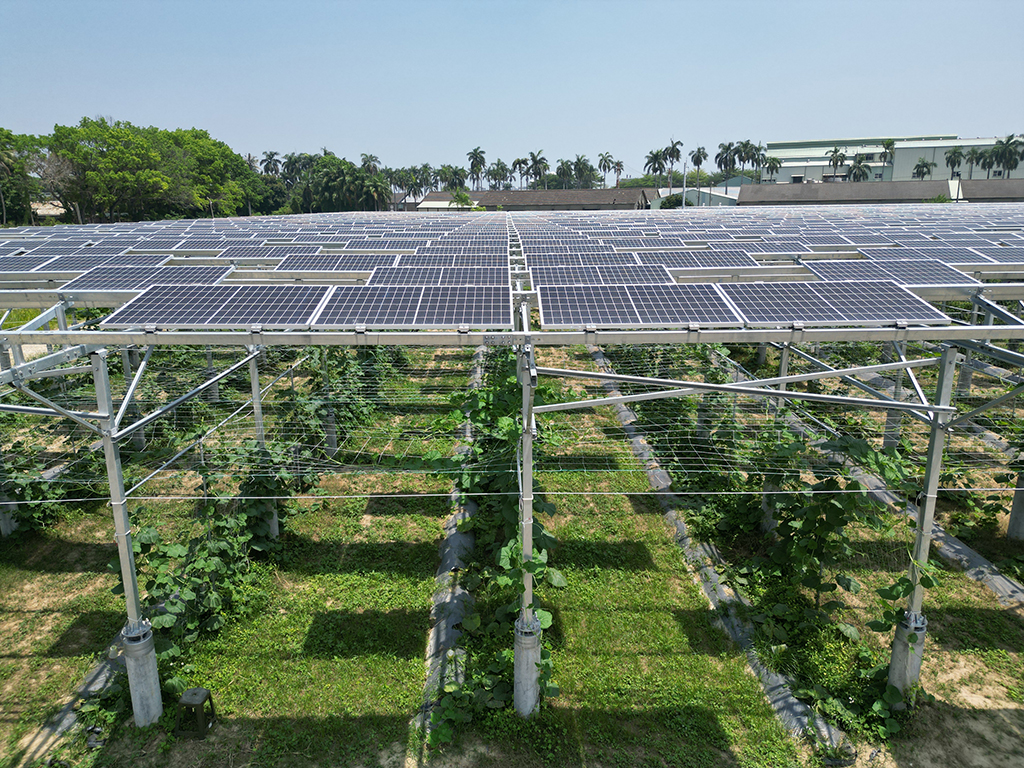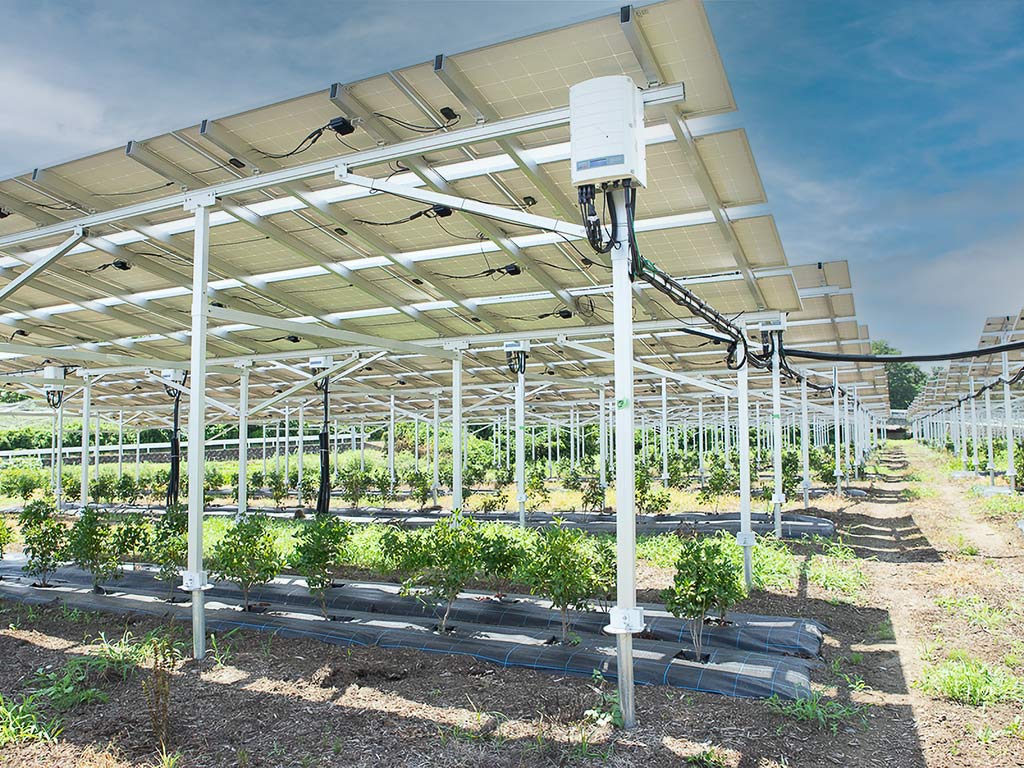Typhoons, Floods, Sandstorms and Birds: SolarEdge Overcomes Large-Scale Solar Challenges in Taiwan

Constructing a vast ground mounted solar system and making it financially viable is hard enough. Add another layer of threats from Mother Nature and you’ve got a mega challenge.
One sizzling hot example of this is a large-scale ground mounted PV plant that was recently installed at an abandoned salt production site in Taiwan using SolarEdge PV solutions.
The plant has installed 77 MW of solar arrays— the size of 78 soccer fields. But besides its considerable size, its location presents one of the world’s most challenging environments for solar. Typhoons and heavy rains lash the island each year, causing severe flooding and pounding it with strong sea winds that carry sand, dust and salt. And when the rain subsides, huge migratory seabirds flock to the wetlands.
SolarEdge stepped up to the plate to overcome these extremely difficult conditions.
The Big Idea of Large-Scale Solar
Solar farms are emerging in all shapes and sizes, as solar PV becomes the lowest-cost option for new electricity generation in most of the world. One of the main types of solar installations increasing in popularity is the large-scale ground mounted solar farm.
Ground-mounted PV plants are generally divided into categories according to the amount of power they can produce:
- Large-scale commercial: Over 1 MW
- Medium commercial: 100.1 kW-1 MW
- Small commercial: 10.1-100 kW
78 Soccer Fields of PV Power
Shinfox Energy, an investment firm in Taiwan focusing on renewable energy, is a subsidiary of the Foxlink group which builds and provides O&M services for renewable power plants. Shinfox recently signed a 20-year lease agreement for a vast piece of land owned by the Taiwanese government, as part of Taiwan’s Feed-In-Tariff (FIT) incentive program.
The plot, near the popular scenic spot of Qigu Mountain just outside of Tainan City, spans more than 550,000 square meters. What was once the site of a 300-year-old abandoned salt production plant is now a 77 MW large-scale commercial solar site that produces renewable electricity (see Case Study). This green electricity will be sold to the utility company for 20 years of dependable revenue.
Reduced Module Mismatch Effects and More Energy
When Shinfox decided to finance the project, they looked for a PV solution that could yield maximum energy output, minimize operating costs, and keep service crews safe. Finding a solar energy system that could deliver the most amount of electricity at such a large site was easier said than done, given the typically high module mismatch rate. Tens of thousands of modules meant potentially significant revenue loss.
The SolarEdge DC-optimized solution was chosen for its proven ability to maximize energy yield by minimizing power losses caused by module mismatch. The SolarEdge inverters and Power Optimizers continuously track MPPs (Maximum Power Points) and adjust current and voltage at module level. With this built-in module mismatch mitigation mechanism, underperforming modules don’t affect other modules on the same string, which results in higher energy production. By contrast, with central or traditional string inverters, underperforming modules reduce the output of all other modules on the string.
SolarEdge addressed several module-mismatch scenarios related to Taiwan’s weather and environment:
- Partial shading from clouds, dust, salt and sand carried by the South China Sea winds, especially during tropical cyclones, all accumulate on the panels and over time reduce their performance. Another stubborn and aggressive form of soiling comes from birds, due to the plant’s location along a main migration route.
- Thermal mismatch: The lower the temperature of the module’s surface, the greater its output, which can affect output efficiency by as much as 10-25%. Each module’s temperature can differ according to its position on the row.
- Uneven module aging: Over the 20-year FIT period, normal wear and tear will inevitably degrade each module at different rates, which increases mismatch power losses. Most module manufacturers specify that during the warranty period, degradation reduces the power output of each module by as much as 20%. The drops in output cause mismatches in a string, which could lead to inconsistent production.
- Micro-cracks: With fluctuating temperatures and heavy winds, modules are subjected to thermal and mechanical stress, which can cause micro-fractures in the silicon wafers, decreasing power generation.
Remote, At-a-Glance Troubleshooting Saves O&M Costs

Maintaining the modules was another major concern for Shinfox, which needed to secure the highest long-term return on their investment. To do that, they had to minimize operating costs.
Typically, thermal imaging drone cameras are used at large solar sites for inspecting and diagnosing PV panels.
SolarEdge avoided these high expenses, saving potentially up to 50% in overall O&M costs. The SolarEdge Monitoring Platform, accessed remotely from any computer, receives granular data from the Power Optimizers, each automatically tracking the performance of every four modules and of the inverters. By receiving real time notifications, O&M personnel can quickly pinpoint faulty modules and troubleshoot remotely, which translates into fewer and shorter site visits.
The modular design of the Three Phase inverter with Synergy technology saved further costs. If one inverter unit should fail, the others are unaffected and will continue to operate independently until the faulty unit is replaced. These units are lightweight, requiring only two people to lift them, making forklifts unnecessary.
SolarEdge also saved more on DC cabling and combiner boxes by supporting as many as 60 modules per string. This reduces incidents of insulation faults associated with moisture (which is common in warm and humid climates), resulting potentially in up to 40% increase of BOS savings.
Keeping People and Assets Safe During the Rainy Season

Service crew safety was a top priority, especially because of the heavy rainstorms that cause flooding during the East Asian rainy and typhoon season when the site turns into a huge retention pond. While the basin helps limit overflowing of the surrounding streams, floodwater reaching knee level or higher could pose a serious electrical hazard to maintenance crews.
SolarEdge technology, safe and reliable by design, complies with stringent international safety standards. The SolarEdge IP65-rated inverters are water and humidity resistant with a wide temperature range, and they comply with the UL 1699B standard for Arc Fault Circuit Protection.
In addition, the built-in SafeDC™ feature can automatically reduce the output voltage of each module to a touch-safe level of 1V within up to 5 minutes, providing extra protection to maintenance and firefighting crews. The automatic Arc Fault Detection prompts the inverter to shut down when an arc fault is detected, reducing the risk of fire due to faulty or improperly connected cables.
Sunny Future Ahead for Supersized Solar Farms
Net zero is the internationally agreed upon goal to reduce global warming by the second half of this century. The IPCC (International Panel on Climate Change) concluded the need to reach net zero CO2 emissions by 2050 in order to limit global warming to 1.5°C.
To achieve this important goal urgent action is needed, and in the energy sector this will require major transitions. The world will have to generate on average 25% more solar PV each year from 2022 to 2030. That’s a serious undertaking, given the limited available areas that are suitable for large-scale solar farms.
One solution will be to utilize areas with sub-optimal soil and weather conditions for large-scale ground mount solar farms. SolarEdge, in addition to its installations in Taiwan, has vast experience in large-scale PV all over the world, such as in the U.S., the Netherlands, Poland, Japan, Turkey and Israel.
Similar Articles






Add new comment
Comments